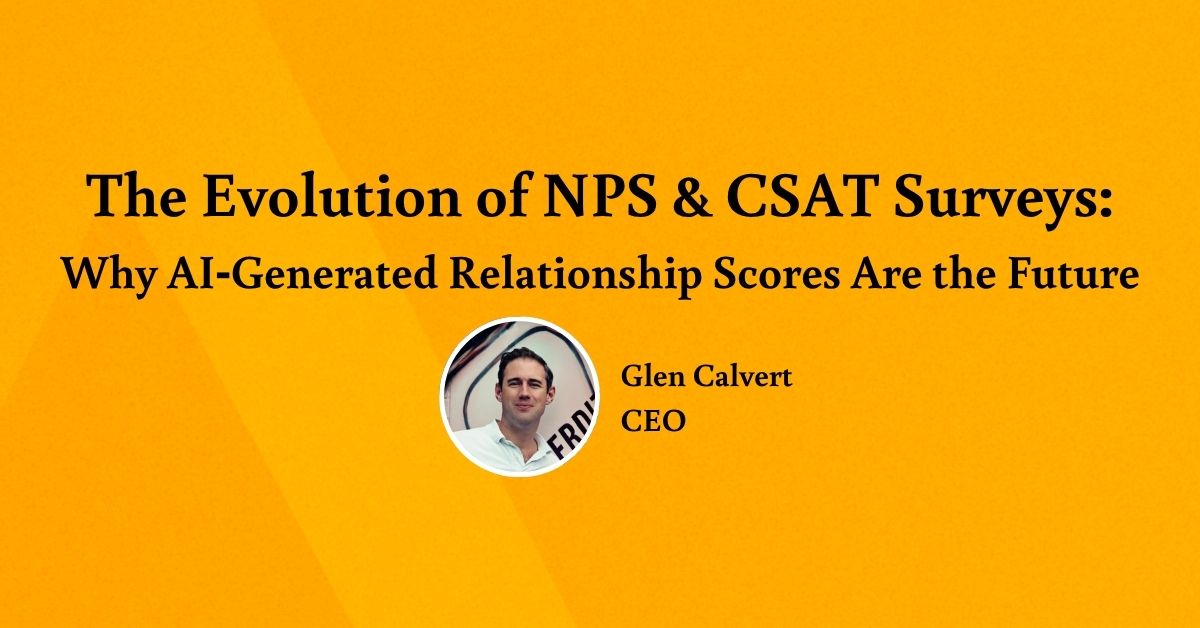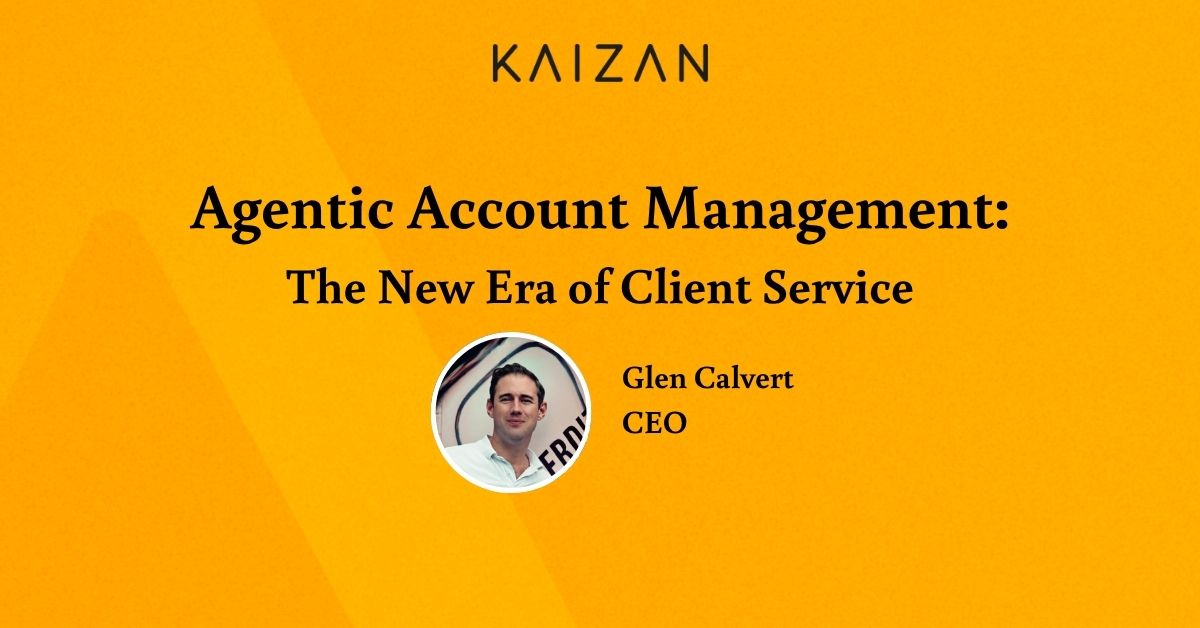A Guide to Segmentation in Client Success

A Guide to Segmentation in Client Success
Client segmentation is an essential tool for any customer centric business.
No client is the same, they have different backgrounds, needs, and approaches to your services. By understanding the different types of clients you work with and what they need from you, you can more effectively allocate your resources and create a more personalised experience. To do this effectively, you need to understand who your different groups of clients are.

What is Client Segmentation?
Client segmentation is the process of organising your clients into groups with similar characteristics, to better understand them.
By doing this, businesses can learn about the groups using their products and what those different groups need from them. This helps companies provide a tailored approach to client service and more effectively target their marketing and sales efforts. Different groups can be approached in different ways, instead of trying to provide an average version of best practice that isn’t actually best for anyone.
There are many different strategies for client segmentation, but the most important factor connecting them all is the use of data. To work effectively, client segmentation must be an analysis grounded in real facts, not the assumptions that team members have already made about clients. You’ll only get the benefits of client segmentation if you approach it correctly.
Why is Client Segmentation Important?
Client segmentation is important because not all clients are the same.
That’s an obvious statement to make, but one that is often overlooked. Many businesses try to take a single approach to all of their clients, under the heading of “best practice”. But when it’s applied uniformly, best practice is an excuse rather than an effective strategy, a reason to avoid the hard labour of working out different needs.
Client segmentation analysis allows client success teams to group clients together based on shared characteristics. This highlights the diversity of clients, instead of papering over it, and not only enables you to adapt your approach to different groups but pushes you into doing so. You don’t just divide the clients into groups but gain an understanding of who is in those groups, what makes them tick, what’s important to each of them, and what they’re looking for.
With the insights that come from segmentation, it’s easier to target each group with specific success strategies. You can build business processes and marketing around the needs and expectations of each client segment, more effectively tailoring your approach to meet their needs and help them achieve their desired goals. This will provide them with better outcomes and make them feel more valued.
But segmentation isn’t just about understanding the values of different groups, it’s also about understanding their value to you. Client segmentation strategies are built around the varying commercial value of clients: which clients have the most potential to provide you with revenue. This helps you to target your time and resources on the most profitable groups, rather than putting a big effort into clients who will provide limited returns.
Different Types of Client Segmentation
There’s a range of different segmentation models that can be used in client success. We’re going to look at three different models, but we’ll start with the most common.
RFM Segmentation
The RFM client segmentation model is named after three factors used to differentiate between clients. These factors help to reveal which clients provide the most value, allowing the company to focus its efforts, keeping existing high-value clients happy and finding more like them.
Like most examples of client segmentation, RFM works on the premise that certain clients are more valuable than others and that these valuable clients can be identified by their past behaviour. The behaviour used in RFM is purely financial and focuses on the purchases clients make.
The three factors used in this model are:
- Recency: How recently did the client purchase from your company?
- Frequency: How often does the client purchase from your company?
- Monetary value: How much does the client spend on each purchase?
There are two big advantages to focusing on these factors.
The first is that the data is in the company’s records and probably easy to extract. The legal obligations and practical benefits of keeping good financial records mean that information about purchases, their value, and who made them will not only be present in financial systems but should be straightforward to search.
The second advantage is the strategic value of segments based so directly on revenues. Identifying the features of your most valuable clients can help you to find more like them, or to get more value out of those you already have.
Based on the three RFM factors, clients are segmented into four quadrants:
- Quadrant 1: Clients who are recent, frequent, and high-value.
- Quadrant 2: Clients who are recent, but infrequent and low-value.
- Quadrant 3: Clients who are not recent, but frequent and high-value.
- Quadrant 4: Clients who are not recent, not frequent, and low-value.
Using the RFM model encourages different forms of targeted effort for different groups.
Client success efforts should be focused on clients in quadrant 1, who are the most valuable. As high-value existing clients, they’re worth the most effort to keep them happy, because they save you from the effort needed to replace them. Making sure that they get consistently great service will keep your main revenues in place.
These clients can also be used as a model of what to look for in new clients, as people like them are more likely to spend big with you. Passing this information to sales and marketing teams can help to target their work.
Less effort should go into clients in quadrants 2 and 3, because of the lower value they bring. Client success work aimed at them should focus on moving them from low to high on a specific axis, encouraging those in quadrant 2 to make larger or more frequent purchases, or trying to find out why those in quadrant 3 haven’t made a purchase recently. The information you already have can help you to do this, starting the conversation in terms that are relevant to the client.
The low value of quadrant 4 clients doesn’t mean that they should be ignored. Those in this quadrant are at the biggest risk of defecting to a competitor. They may benefit from focused efforts to keep them on board, or low-effort contact that encourage them to engage more often. But their lower value should mean that the client service team adjust the time spent on servicing.
Other strategies might also be deployed based on this segmentation. You might put high spenders who interact frequently into a VIP group, to protect quadrant 1 and move clients there from quadrant 3. Low spenders who interact infrequently might be put into a low-priority group where the business exerts minimal effort because of their low value.
As with any segmentation model, RFM can provide more value if you look at the features of clients in different groups. Are there particular types of clients who end up in lower quadrants, who are unlikely to ever enter quadrant 1 but can provide a small, steady stream of revenue? What do quadrant 1 clients look like, and how can you find more of them? Are there client success approaches that will be more effective with groups from different quadrants, and what does that tell you about how to spend your team’s time?
Its ability to focus effort on areas of direct financial value is the basis of RFM’s appeal, but other models also have benefits.
Lifetime Value Model
A lifetime value model organises clients based on the total financial value they are expected to bring to the company over the course of their relationship. It’s a relatively straightforward model to use, and another one that can be achieved by extracting and analysing raw financial data. This method of segmentation can easily be adapted to the scale of your company and the financial commitment customers make in buying your products.
Lifetime value is simpler than RFM, both in the data needed and in the way it’s analysed. This makes it easier to use and a good choice for teams exploring segmentation for the first time, but simplicity has its downsides. Lifetime value, in its basic form, doesn’t consider changes in a client’s behaviour over time. A client who spent a lot in the past but hasn’t bought anything from the company recently might look more valuable than a relatively new client who’s currently a high spender. You can adjust for this, but if you’re going to make a lot of adjustments then you’ll probably be better off using a different, more sophisticated model.
Again, the information derived can be used to target client success efforts at the most valuable segments, and to tailor products and services to meet those clients’ needs. You might put more effort into high-value clients to keep them on board, while developing focused strategies to extract more value out of mid-tier clients.
Engagement Model
The engagement model does client segmentation using a different approach, focusing on activity rather than revenues. While the aim is to increase revenues, past expenditure isn’t taken as the main metric for judging future spending. The implicit assumption of revenue-based models is that past spending is the best predictor of future spending. The engagement model implies that other behaviours are better indicators.
This model’s raw data is sourced from contact records, including purchases, rather than relying on financial information. If there are customer records, such as surveys or satisfaction questionnaires, then these are also useful. If you have the resources, you might even want to carry out a survey, asking questions about how clients view your company and use its resources, before trying to segment clients based on engagement.
Using this information, clients are segmented based on how positively and actively engaged they are. The frequency and quality of their interactions with the company can be used as indicators of this. Exactly how you break it down will require some judgement and a good knowledge of how often most clients interact with you, and this is specific to each business, but the overall pattern is the same. Clients who interact with you often and positively are likely to be highly engaged, clients who have infrequent or negative interactions aren’t.
The model has four segments:
- Active clients: These are clients who are actively engaged with the business. They are highly satisfied and are likely to continue doing business with you.
- At-risk clients: These are clients who are at risk of becoming disengaged. They may be dissatisfied with the business or have had a negative experience.
- Disengaged clients: These are clients who are no longer engaged with the business. They may be inactive or have cancelled their service.
- New clients: These are clients who are new to the business. They have not yet had a chance to engage.
As in other segmentation strategies, the top cohort provides a model for other clients you could look to recruit, as well as a high-value group to protect by providing excellent, proactive client service.
Your biggest efforts are likely to go into at-risk clients. They still have a lot of potential and haven’t been put off yet, but some effort is needed to retain them. It is often worth justifying this extra effort now, as this will save you the larger effort of replacing them with new clients later, by preserving them as a reliable part of your active client base.
Disengaged clients would be a harder sell, and may not be worth the effort. Examining them can tell you which people are less likely to stay engaged with your company, and some low-effort outreach might help you draw a few back in.
Best Practice for Client Segmentation
The best way to segment clients will vary from business to business, and will depend on the products or services that you’re offering. But regardless of your business and how you define your segments, there are some general tips you can follow to ensure that the client segmentation process is effective.
Keep it simple
Simplicity is key. The goal is to group together clients who share similar characteristics, not to create overly complicated segments that are difficult to understand or manage. You might learn more sophisticated lessons about your clients once you start analysing them, but that doesn’t mean that you should create an overly complicated system of ever smaller segments.
Use data to inform your decisions
When segmenting clients, be sure to use data to inform your decisions. There is no point in segmenting clients if the segments that are created are not based on real data.
It’s tempting to start segmenting based on instincts and existing impressions of who your clients are, or to adjust the segments to match this. But this will only reinforce your existing prejudices about who your clients are, not teach you anything new. Use hard data and make sure that you are learning from it instead of bending it to your assumptions.
Test and refine your segments
Once you have created your segments, it’s important to test them to see if they are effective.
Do your clients fit these segments in a clear and meaningful way?
Can you see patterns of who is in each segment, beyond the way that you’ve grouped them?
Do these segments help you to understand your clients?
Do they help you to target your efforts, in client success and elsewhere in the business?
If your segments aren’t coherent, meaningful, and useful, then you won’t gain anything from working with them. Look again at how you’ve done this and refine your segments until they work. This might mean adjusting the boundaries between segments or assigning different weightings to the data. In extreme cases, it could involve moving to an entirely different segmentation system.
Be flexible
Client segmentation isn’t a static process. Your business, your clients, and the interaction between the two are going to change, and the way you understand them has to change in response. Be flexible and adapt to changes in the market or in your business, re-examining your segments as circumstances shift.
This flexibility extends to individual clients. The way that you understand them may change over time. In addition, your efforts based on the segmentation model you choose, will also change the segment which a client is within, as they become more engaged or spend more money.
A clear segmentation system is important, but an overly rigid one will hinder rather than help you.
Automate where possible
Client segmentation can be time-consuming, so it’s important to automate it where possible. There are a number of software platforms that can help with this, such as client success platforms. If these can create client segments for you, they can save you a lot of manual time and effort.
Good automation doesn’t detract from the creativity and insight that humans bring, but helps them to reach those insights faster. Combine automated analyses and human insights to get the most out of your resources.
Client segmentation is a powerful tool that can help businesses to target their efforts. By following the tips above, you can ensure that your client segmentation process is effective and efficient, and use it to enhance your client success approach.



